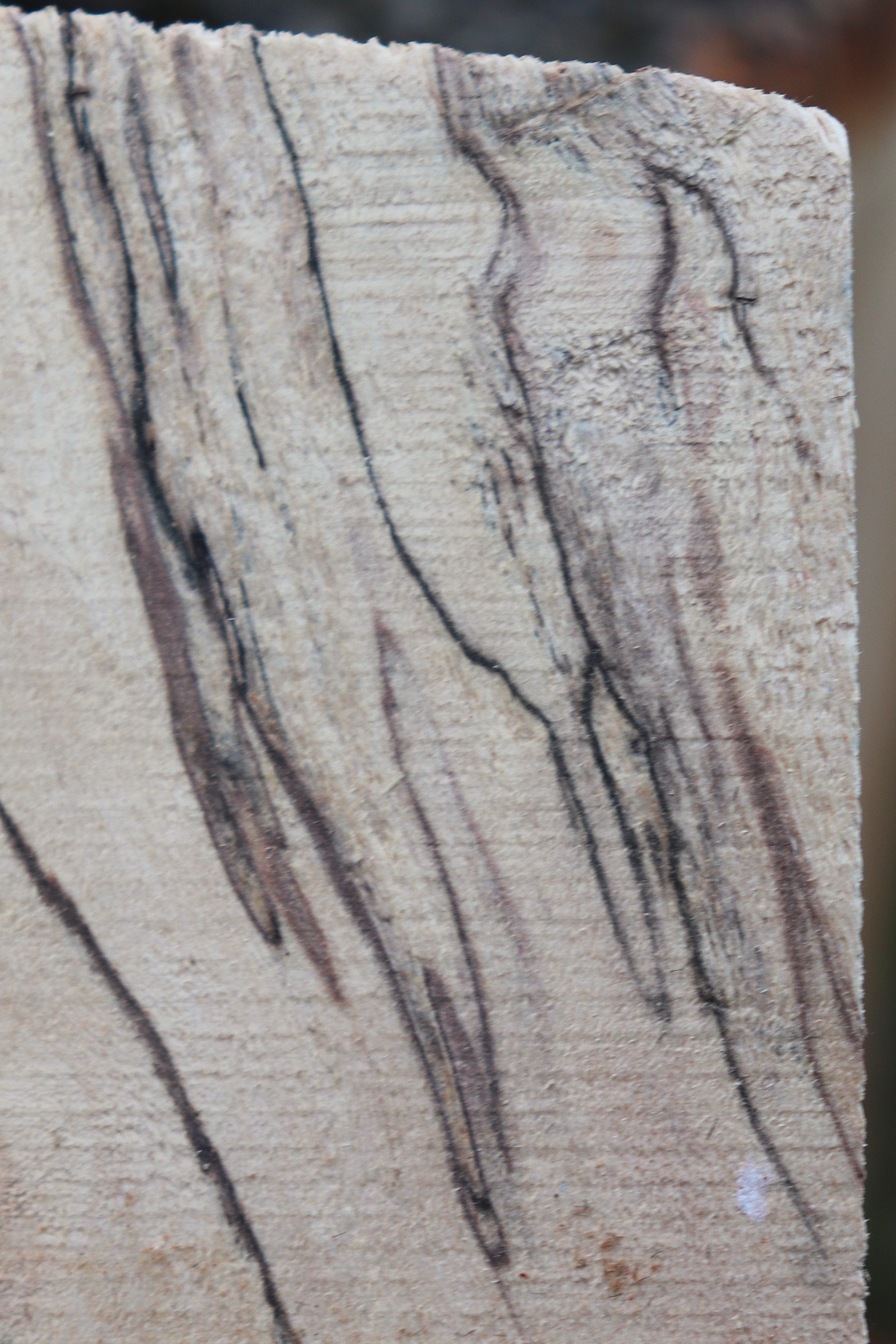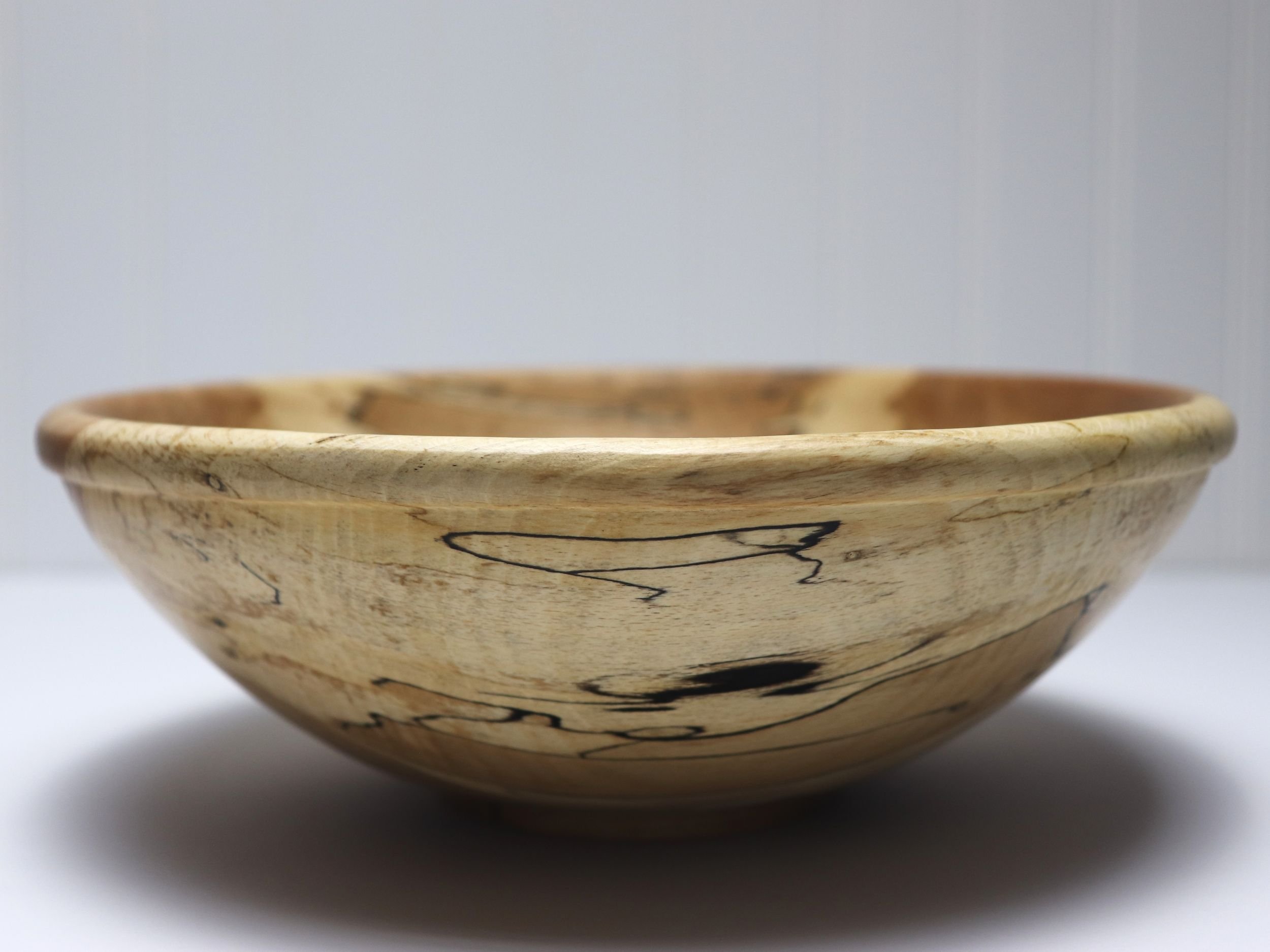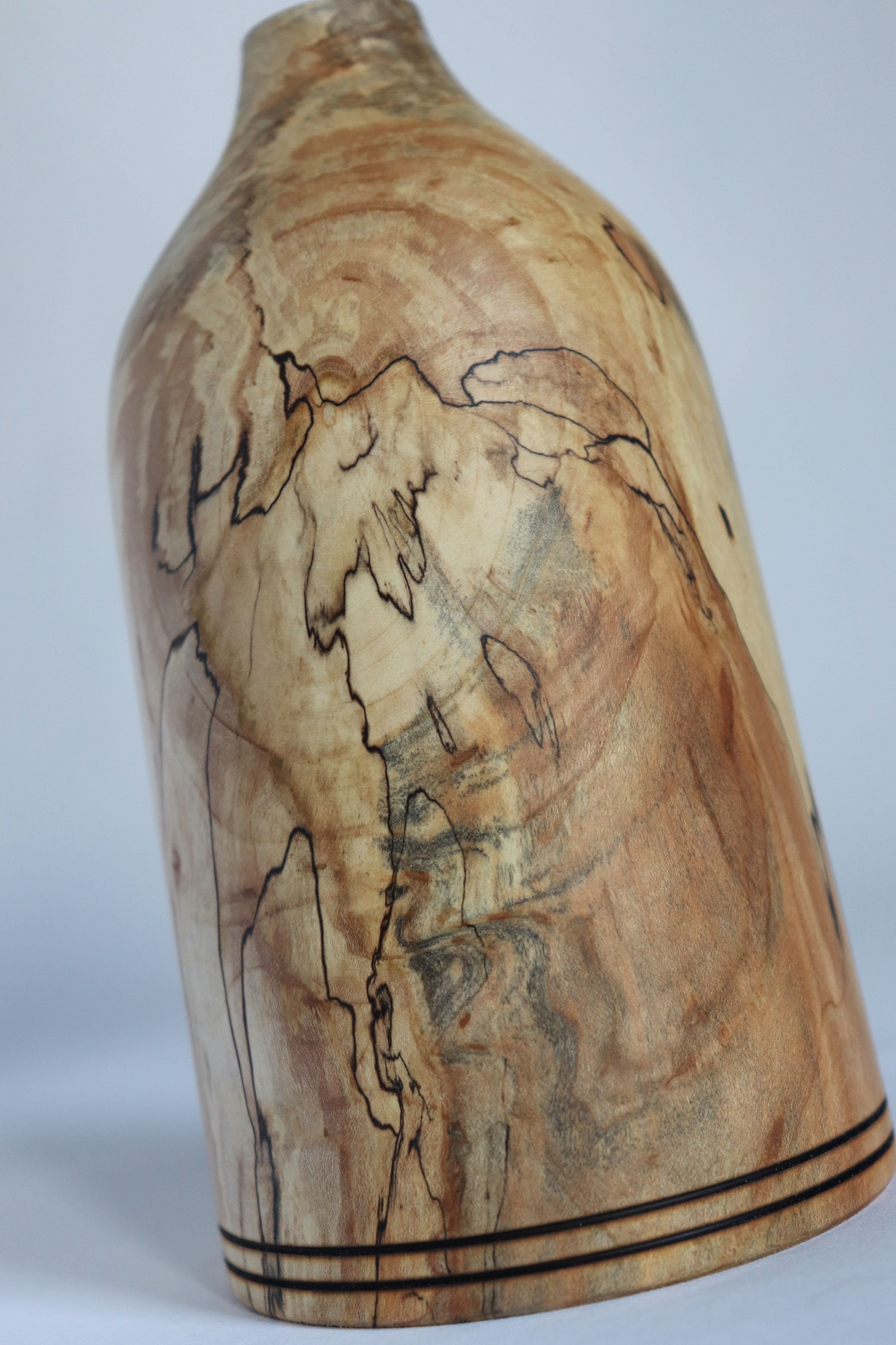The Hidden Beauty of Spalted Maple: Nature's Artistic Masterpiece in Wood
Spalted Maple Photo by GHW
When most people admire a finely crafted wooden piece, they see beauty in the grain patterns, color variations, and skilled craftsmanship. But there’s a particular wood that tells a deeper story—a visual narrative of struggle, transformation, and remarkable beauty emerging from decay. That wood is spalted maple, and it represents one of nature’s most extraordinary artistic processes occurring right beneath our noses.
As a craftsman who has worked with countless wood species over the years, I’ve developed a special appreciation for the unique character that spalting brings to maple. The striking black lines, unexpected color changes, and unusual patterns create pieces that simply can’t be replicated—each is truly one-of-a-kind. Let me take you on a journey through the fascinating world of spalted maple, from its formation to why it holds such a special place in fine woodworking.
What Is Spalted Maple?
Maple (no Spalting) Photo by GHW
Spalted maple isn’t a distinct species of maple tree. Rather, it’s regular maple wood that has begun the early stages of decay due to fungal colonization. This process creates dramatic black lines (called zone lines), areas of white rot, and sometimes vibrant color changes throughout the wood. While spalting can occur in many wood species, maple’s light, even-toned background provides the perfect canvas for these striking visual elements to stand out.
What many people don’t realize is that spalted maple represents a delicate balance in the decomposition process. If caught too early, the visual characteristics aren’t fully developed. If harvested too late, the wood becomes too soft and punky to work with effectively. The most prized spalted maple is obtained at precisely the right moment—when the visual impact is at its peak but before structural integrity is significantly compromised.
The Science Behind the Beauty: What Causes Spalting
The seemingly artistic patterns in spalted maple are actually the result of a fierce microbial battleground. Several types of fungi are typically involved:
White Rot Fungi break down lignin in the wood, leaving behind lighter-colored areas. These fungi digest the compounds that give wood its rigidity and brownish color, creating patches that are noticeably softer and paler than the surrounding wood.
Zone-Line-Forming Fungi create the most distinctive feature of spalted maple—those dramatic black lines. These lines are actually defensive walls built by fungi as they compete for territory within the wood. The dense, dark fungal tissue acts as a barrier against competing organisms.
Pigment-Producing Fungi (like Chlorociboria species) introduce blues, greens, and even pinks into the wood, adding another layer of visual intrigue.
For spalting to occur naturally, specific conditions are required. The wood must have enough moisture to support fungal growth but not be completely saturated. Temperature also plays a crucial role—not too cold to inhibit growth, but not so warm that decomposition races ahead. Many of the best spalted maple specimens are discovered in partially protected outdoor environments where these conditions naturally align.
Beyond Maple: Other Woods That Spalt Beautifully
While maple is the most iconic canvas for spalting, this process can occur in many wood species, each with its own unique character:
Spalted Beech Bowl; Photo and product by Grayhill Woodworking
Birch spalts readily, producing intense black zone lines against its pale background.
Beech develops elegant, swirling patterns and is a favorite in European woodworking.
Hickory offers striking contrasts due to its distinct sapwood and heartwood.
Holly, with its near-white color, creates some of the most dramatic spalted effects.
Cherry, walnut, and ash can also spalt, though their darker tones may mute the visual impact compared to maple.
The common thread? Light-colored woods with tight grain structures tend to showcase spalting most vividly, turning decay into a gallery of natural art.
Identifying Spalted Maple: What to Look For
Recognizing spalted maple is straightforward once you know the key indicators:
✔ Black Zone Lines – Irregular, meandering lines that resemble ink strokes or topographic maps.
✔ Color Variations – Patches of bleached wood, unexpected blues/greens, or subtle pink hues.
✔ Texture Differences – Slightly softer areas where fungi have broken down the wood fibers.
✔ Unpredictable Figure – Patterns that defy traditional wood grain, appearing more like abstract art.
Unlike standard maple, which displays uniform grain or occasional bird’s-eye figuring, spalted maple is wilder—its beauty lies in its imperfections.
The Aesthetic Appeal: Finding Magic in Decay
The first time I encountered spalted maple as a young carpenter, I was captivated by the wood itself—alive with swirling black lines and patches of subtle color, as if painted by some woodland spirit. All I wanted was to highlight those natural patterns, crafting pieces where the wood’s story took center stage.
"No two pieces are ever the same" is one of my woodworking mantras. Spalted maple embodies this perfectly, capturing a fleeting moment between life and decay before being preserved in a finished piece.
A fellow woodworker once called it "nature’s graffiti," and the description fits. These fungal marks—born from competition and decay—transform utilitarian material into art. Clients who typically prefer pristine, uniform wood often find themselves drawn to spalted maple’s organic, unpredictable beauty.
Perhaps we’re wired to see meaning in these patterns, like faces in clouds or stories in constellations. Or maybe it’s deeper—a recognition that transformation, even through decay, can create something more extraordinary than what existed before.
Working With Spalted Maple: The Craftsman’s Challenge
Every piece of spalted maple tells a story, but working with it requires patience and respect. Early in my career, I learned this the hard way as a young woodworker when a stunning slab crumbled under my chisel. Now, I approach it as a collaboration:
Stabilizing soft areas with CA glue or wood hardner when necessary, before shaping.
Anticipating its thirst for finishes—spalted wood absorbs stains and oils unevenly.
Wearing protective gear to avoid inhaling the very spores that created its beauty.
The key is to work with the wood’s nature, not against it.
Where Spalted Maple Truly Shines
In my workshop, spalted maple finds its highest calling in pieces meant to be admired up close:
Jewelry boxes with lids that resemble abstract paintings.
Bowls and vases where light plays off the intricate zone lines.
Each finished piece feels like preserving a moment in time—a snapshot of nature’s artistry, frozen in wood.
Finding Nature’s Canvas
In my region, spalted maple is plentiful, often discovered in unexpected places. A storm-downed maple from a neighbor’s yard revealed spectacular patterns after six months buried under leaves—nature’s perfect spalting experiment.
Some woodworkers even cultivate spalting intentionally, carefully controlling moisture and temperature to "guide" the decay. But whether found or fostered, the best pieces strike a balance—firm enough to work with, yet visibly transformed by fungi.
When I apply the final coat of oil, watching those black lines pop against the pale wood, I’m reminded that we’re not just crafting objects—we’re curating natural history.
The Timeless Appeal of Spalted Maple
In a world of mass-produced perfection, spalted maple stands as a testament to nature’s ability to create beauty from imperfection. What begins as decay becomes something extraordinary—much like how life’s challenges often lead to unexpected growth.
For woodworkers, collectors, and nature lovers alike, spalted maple is more than just material. It’s a collaboration with the natural world, a reminder that even in endings, there can be breathtaking new beginnings.
The next time you see a piece of spalted maple, trace those black lines with your finger. You’re not just touching wood—you’re touching a fossilized battle, a moment of transformation, and a masterpiece painted by time itself.
Ready to Own a Piece of Nature’s Art?
At Grayhill Woodworking LLC, I transform extraordinary materials like spalted maple into heirloom-quality home décor and tableware. Each piece honors the tree’s journey—from forest to fungal masterpiece—through sustainable craftsmanship.
Explore my collection and bring home a conversation piece where nature’s beauty meets artisan skill. Because the best stories aren’t just told… they’re lived with.
Grayhill Woodworking LLC creates handcrafted wooden home décor and tableware using sustainable practices. Each piece celebrates the natural beauty of wood while honoring the remarkable trees from which our materials originate. Bring the healing power and natural warmth of trees into your home with our unique artisanal creations.




